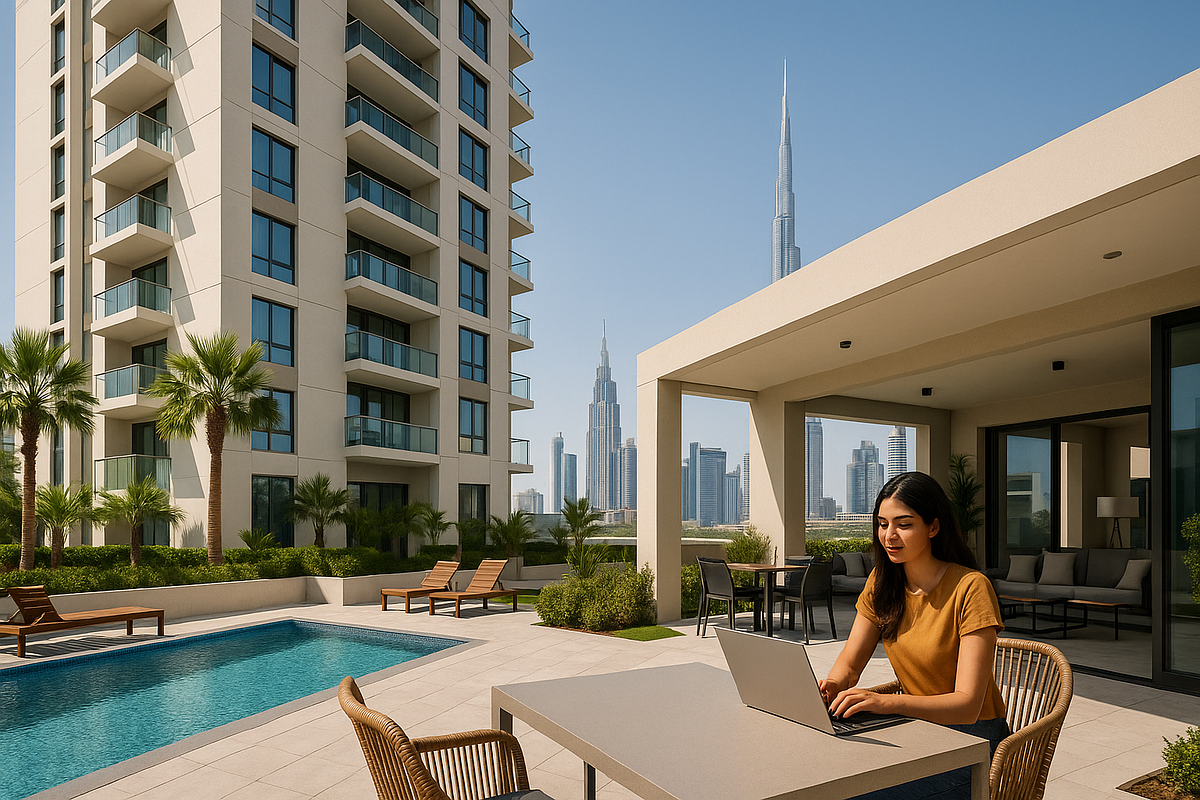
Dubai’s rental market is evolving faster than ever. With a young, diverse, and mobile population, new living concepts are redefining how people rent homes. One of the biggest shifts in recent years is the rise of co-living spaces — an innovative housing model designed to meet the needs of modern professionals, digital nomads, and even small families looking for community living at affordable prices.
But how does co-living really compare to traditional apartments? Which one offers better value, convenience, and lifestyle benefits in Dubai’s competitive property market? Let’s explore the two housing trends in depth.
Co-living is more than just sharing an apartment — it’s a lifestyle built around community, flexibility, and convenience. Residents typically rent a private bedroom while sharing communal areas like the kitchen, lounge, or workspace. These spaces often come fully furnished and include utilities, Wi-Fi, and cleaning services, allowing tenants to move in hassle-free.
In Dubai, co-living gained momentum around 2020, especially among young professionals and entrepreneurs seeking flexible rentals without long-term commitments. Popular developments like Collective by Emaar, Hive Coliv, and UNA Apartments at Town Square have made the concept mainstream.
Co-living appeals to people who value affordable rent, social connections, and an urban lifestyle centered around shared experiences.
Traditional apartments, on the other hand, have long defined Dubai’s rental market. These range from studio flats in central business districts to spacious apartments in residential communities like Jumeirah Lakes Towers, Downtown, and Dubai Marina.
They typically require longer leases — usually one year — and tenants handle utilities, furnishing, and maintenance themselves. For many, this traditional setup provides privacy, stability, and a sense of ownership, especially for families or long-term residents.
While traditional apartments involve higher initial costs and commitments, they offer personal space and independence that shared models may lack.
Let’s break down how these two living models differ in practicality, lifestyle, and costs.
If you’re new to Dubai or unsure how long you’ll stay, co-living provides the freedom to test the city before committing long-term.
Co-living often wins in terms of affordability and convenience, especially for single professionals or small groups looking to split costs.
Traditional apartments remain the better choice for privacy and long-term comfort.
For newcomers to Dubai, co-living can be a great way to build a network and settle in quickly.
Co-living spaces are often located in vibrant neighborhoods such as Business Bay, Downtown Dubai, or Jumeirah Village Circle, close to cafes, co-working hubs, and transport links.
Traditional apartments, however, offer more diverse choices — from beachfront homes in Jumeirah to suburban villas in Mirdif. Families and long-term residents prefer traditional communities for schools, parks, and space.
In co-living, maintenance and housekeeping are handled by management. You don’t have to worry about calling service providers or paying separate bills.
In traditional apartments, tenants manage all services themselves, though some buildings offer maintenance packages. While this gives more control, it also adds responsibility.

The lifestyle you choose largely depends on your life stage, career, and social preferences.
Dubai’s rapid growth as a global business hub has created demand for more flexible living arrangements. Co-living has become a natural solution for residents who prioritize affordability, networking, and convenience.
Developers and property managers are investing in purpose-built co-living spaces that combine modern design with shared amenities like gyms, lounges, and rooftop areas. This model mirrors successful examples from cities like London, Singapore, and New York — but tailored for Dubai’s multicultural audience.
The demand is especially strong among young professionals aged 22 to 35, who view co-living as a smart entry point into Dubai’s housing market.
While co-living offers clear benefits, it’s not without challenges. The biggest drawbacks include:
Despite these, many residents find the convenience and social benefits outweigh the downsides, especially for short- to medium-term stays.
Traditional apartments remain the backbone of Dubai’s rental market. Families and professionals who plan to stay long-term prefer the security and customization traditional housing offers.
Key advantages include:
Dubai’s strong rental laws and maintenance standards make traditional rentals a safe and predictable choice for most residents.
| Category | Co-Living | Traditional Apartment |
|---|---|---|
| Rent Payment | Monthly (inclusive) | Yearly (excluding bills) |
| Deposit | Minimal or none | 5% security deposit + agent fee |
| Utilities | Included | Paid separately |
| Furnishing | Fully furnished | Often unfurnished |
| Maintenance | Included | Tenant-managed |
| Privacy | Shared spaces | Private unit |
| Flexibility | High | Low |
| Community | Strong | Limited |
For many renters, the total cost of co-living can be 20–30% less than traditional apartments when factoring in furniture, bills, and services.
Dubai’s rental landscape is shifting toward more flexible and experience-driven housing. As remote work becomes normal and younger expats seek community living, co-living is likely to expand rapidly.
Developers are already responding by creating mixed-use projects that integrate co-living, co-working, and lifestyle amenities under one roof. This model fits perfectly with Dubai’s vision of being a city of innovation and connectivity.
However, traditional apartments will continue to dominate the family and long-term rental segment. In fact, both models are expected to coexist — serving different demographics and lifestyles.

When deciding which option suits you best, consider these key questions:
Your lifestyle goals should guide your choice — not just your budget.
Dubai’s rental market is evolving to match the city’s fast-paced, multicultural lifestyle. Whether you choose a co-living space buzzing with activity or a traditional apartment offering personal freedom, Dubai has options that suit every need.
Co-living is redefining urban housing — offering affordable, flexible, and socially engaging living experiences. Meanwhile, traditional apartments continue to attract those who value stability, privacy, and family life.
Ultimately, both choices represent the essence of Dubai: diversity, innovation, and opportunity. Your perfect home depends on what you value most — community or independence, flexibility or permanence.
Do Follow Estate Magazine on Instagram
